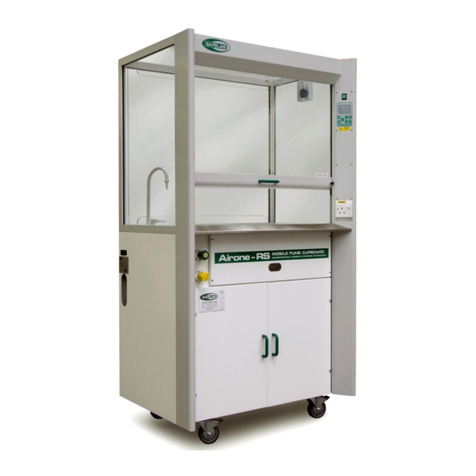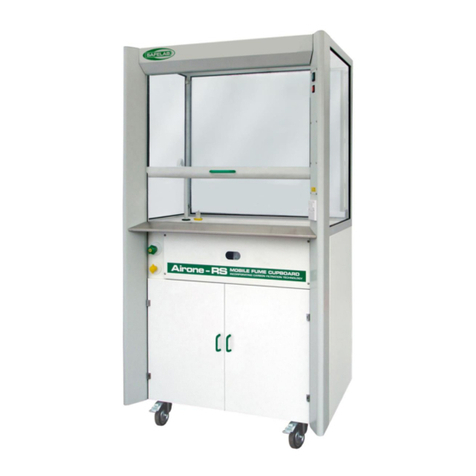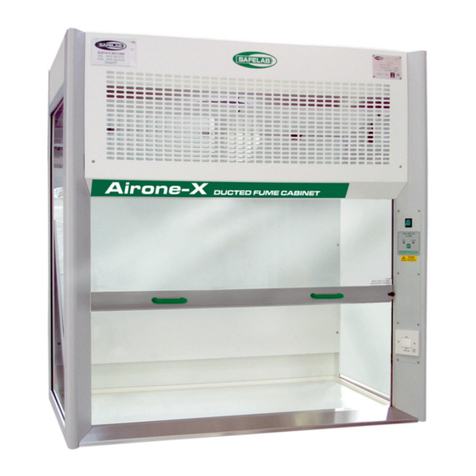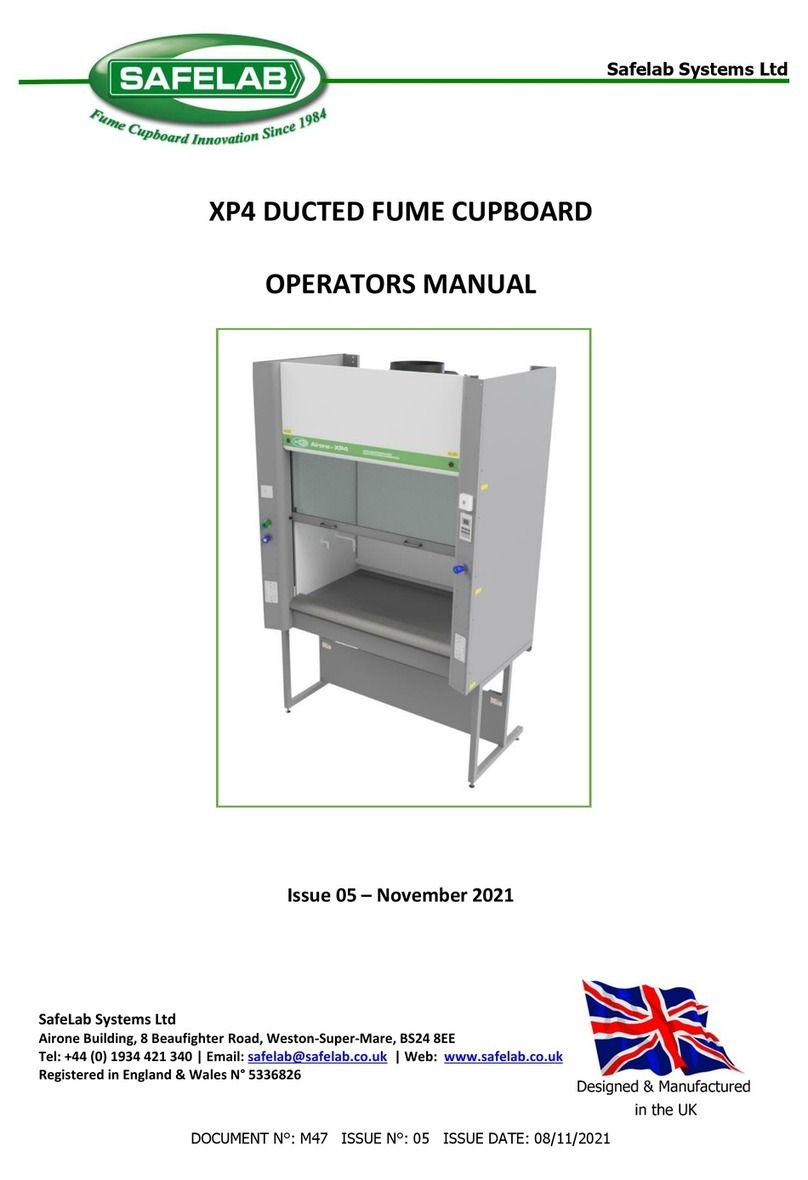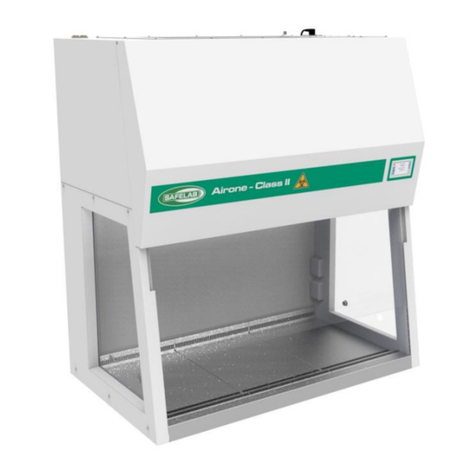
DOCUMENT NO: M27 ISSUE: NO: 07 ISSUE DATE: 27/06/2018
SPECIFICATION
Definition: The Airone DS Semi-Mobile Ducted Fume Cupboard has been
designed to comply with BS EN 14175 fume cupboards along with
Building Bulletin 88 from the Department for Education and
Employment and has been tested by CLEAPSS.
Application: The unit gives maximum flexibility and can be manoeuvred between
different locations (within the range of the flexible extract duct). A
counterweighted sliding front sash and clear laminated glass sides
and rear provide 360° all round visibility making this ideal for
demonstrations. Lowering the sash will reduce the airflow and
therefore noise is reduced to a minimum benefiting demonstration.
Construction: Aluminium extrusions and mild steel sheet, welded and painted in
epoxy powder coat, Light Grey RAL-7035 and White RAL-9016. The
fume enclosure is laminated safety glass.
The top panel and rear baffle are clear acrylic.
The suspended/counterweighted front sash is in laminated safety
glass with an epoxy powder coated extruded aluminium handle.
The work tray is white polypropylene as standard.
Sash Operation: The vertical sliding laminated glass sash of the AIRONE DS fume
cupboard is suspended and counterweighted providing added
advantages over fixed-sash or folding sash fume-hoods. E.g. the
sliding laminated glass sash can be closed and this provides
protection to operators.
The vertical sash conforms to Paragraph 4.12 of the Building Bulletin
# 88 of the DofEE (Rev. of Design Note # 29) and BS:7258
requirements in that the sash cannot fall if one of the suspending
cable-cords is cut.
The fume cupboard uses an air bypass system to give a constant face
velocity at different sash heights within the working range.
Storage Area: Accessed by double doors located at the bottom of the unit.
Low Airflow Alarm: Gives a visual (red light) and audible indication of a low airflow
condition. A green light is illuminated in normal operation.
Located on the RH side cabinet aerofoil.
Supply: 230V 50Hz
Performance: The average inflow at the working aperture is 0.4 m/s.
The minimum working aperture is 200mm high.
The maximum working aperture is 365mm high.
Services: Gas, water with remote valves with flexible connection hoses and waste
with bottle trap and flexible drainpipe (unless specified otherwise)






